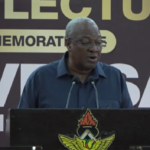What we know about the Hezbollah walkie-talkie explosions
Watch how the Hezbollah exploding pagers attack unfolded
Joe Tidy
Cyber Correspondent
At least 26 people including two children were killed and thousands more injured, many seriously, after communication devices, some used by the armed group Hezbollah, dramatically exploded across Lebanon on Tuesday and Wednesday.
In the latest round of blasts, exploding walkie-talkies killed 14 and injured at least 450 people, according to Lebanon’s health ministry.
The explosions occurred in the vicinity of a large crowd that had gathered for the funerals of four victims of Tuesday’s blasts.
BBC teams in the city reported chaotic scenes in which ambulances struggled to reach the injured, and locals became suspicious of anyone using a phone.
The explosions deepened unease in Lebanese society, coming a day after an apparently similar, and highly sophisticated attack targeting pagers used by Hezbollah members.
The militant group blamed its adversary Israel. Israeli officials have so far declined to comment.
Two firms based in Taiwan and Hungary accused in media reports of manufacturing the pagers have both denied responsibility.
Here is what we know so far.
How did the attacks unfold?
The first round of blasts began in Lebanon’s capital Beirut and several other areas of the country at about 15:45 local time (13:45 BST) on Tuesday.
Witnesses reported seeing smoke coming from people’s pockets, before seeing small explosions that sounded like fireworks and gunshots.
Citing US officials, the New York Times said that the pagers received messages that appeared to be coming from Hezbollah’s leadership before detonating. The messages instead appeared to trigger the devices, the outlet reported.
Explosions continued for around an hour after the initial blasts, the Reuters news agency reported.
Soon after, scores of people began arriving at hospitals across Lebanon, with witnesses reporting mass confusion in emergency departments.
Similar scenes played out across the country in another round of blasts Wednesday, at around 17:00 local time (15:00 BST).
Reports suggest it was walkie-talkies that were blown up, devices that were purchased by Hezbollah five months ago, according to a security source speaking to Reuters.
At least one explosion was close to a funeral being held in Beirut for some of the victims of Tuesday’s attack, creating panic among those near the procession.
Nine people have been killed and hundreds more injured, according to Lebanon’s health ministry.
What do we know about the devices?
Details about the walkie-talkies detonated in Wednesday’s explosions are still coming to light.
Footage shot in the aftermath showed destroyed devices bearing the brand Icom, a Japanese company. The BBC reached out to Icom Japan via a contact form on their website but has not receive a reply.
The pagers that exploded on Tuesday were a new brand that the group had not used before, one Hezbollah operative told the AP news agency. A Lebanese security official told the Reuters news agency that around 5,000 pagers were brought into the country about five months ago.
Labels seen on fragments of exploded pagers point to a pager model called the Rugged Pager AR-924. But its Taiwanese manufacturer Gold Apollo has denied any involvement with the explosions. When the BBC visited Gold Apollo on Wednesday local police were swarming the company’s offices, inspecting documents and questioning staff.
The founder, Hsu Ching-Kuang, said his company had signed an agreement with a Hungarian-based company – BAC – to manufacture the devices and use his company’s name. He added that money transfers from them had been “very strange”, without elaborating.
BBC Verify has accessed BAC’s company records, which reveal it was first incorporated in 2022.
Its CEO Cristiana Bársony-Arcidiacono told NBC that she knew nothing about the explosions. “I don’t make the pagers. I am just the intermediate. I think you got it wrong,” she said.
The Hungarian government said the company had “no manufacturing or operational site” in the country.
What prompted the pager attack?
Unnamed US and Israeli officials told Axios that detonating the pagers all at once was initially planned as the opening move in an “all-out” offensive against Hezbollah. But in recent days Israel became concerned Hezbollah had become aware of the plan – so they were set off early.
Israeli officials have not commented on the allegations, but most analysts agree that it seems likely it is behind the attack.
Prof Simon Mabon, chair in International Relations at Lancaster University, told the BBC: “We know that Israel has a precedent of using technology to track its target” – but he called the scale of this attack “unprecedented”.
Lina Khatib, from the UK-based Chatham House, said the attack suggested that Israel has “deeply” infiltrated Hezbollah’s “communications network”.
In its statement accusing Israel of being behind the attacks, Hezbollah said it held the country “fully responsible for this criminal aggression that also targeted civilians”.
Hezbollah has not yet attributed blame for Wednesday’s attack.
Why does Hezbollah use pagers?
Hezbollah has relied heavily on pagers as a low-tech means of communications to try to evade location-tracking by Israel. Pagers are wireless telecommunications devices that receive and display alphanumeric or voice messages.
They are much harder to track than mobile phones, which have long since been abandoned as simply too vulnerable, as Israel’s assassination of the Hamas bomb-maker Yahya Ayyash demonstrated as long ago as 1996, when his phone exploded in his hand.
In February, Hassan Nasrallah directed Hezbollah fighters to get rid of their phones, saying they had been infiltrated by Israeli intelligence. He told his forces to break, bury or lock their phones in an iron box.
Experts now say the directive, issued during a live televised address, may have forewarned Israeli intelligence operatives that the group would be seeking a new – likely lower tech – method of communications.
What is known about the victims of Tuesday’s attack?
A source close to Hezbollah told AFP that two of those killed in Tuesday’s attack were the sons of two Hezbollah MPs. They also said the daughter of a Hezbollah member was killed.
Among the injured was Iran’s ambassador to Lebanon, Mojtaba Amani. Reports in Iranian media said his injuries were minor.
Hezbollah chief Hassan Nasrallah was not hurt in the explosions, Reuters reported quoting a source.
Lebanese Public Health Minister Firass Abiad said damage to the hands and face made up the majority of injuries.
The victims presenting to emergency rooms were a variety of ages, from the old to the very young, some wearing civilian clothes, he told the BBC’s Newshour programme.
Outside of Lebanon, 14 people were injured in similar blasts in neighbouring Syria, according to UK-based campaign group the Syrian Observatory for Human Rights.
Will the Hezbollah-Israel conflict escalate?
Hezbollah is allied with Israel’s arch-nemesis in the region, Iran. The group is part of Tehran’s Axis of Resistance and has been engaged in a low-level war with Israel for months, frequently exchanging rocket and missile fire across Israel’s northern border. Entire communities have been displaced from both sides.
The blasts came just hours after Israel’s security cabinet made the safe return of residents to the north of the country an official war goal.
While visiting an Israeli airbase on Wednesday, Defence Minister Yoav Gallant said the country was “opening a new phase in the war” and and the “centre of gravity is shifting to the north through the diversion of resources and forces”.
Despite the ongoing tensions, observers say that until now both sides have aimed to contain hostilities without crossing the line into full-scale war. But there are fears that the situation could spiral out of control.
Additional reporting by Frances Mao

















